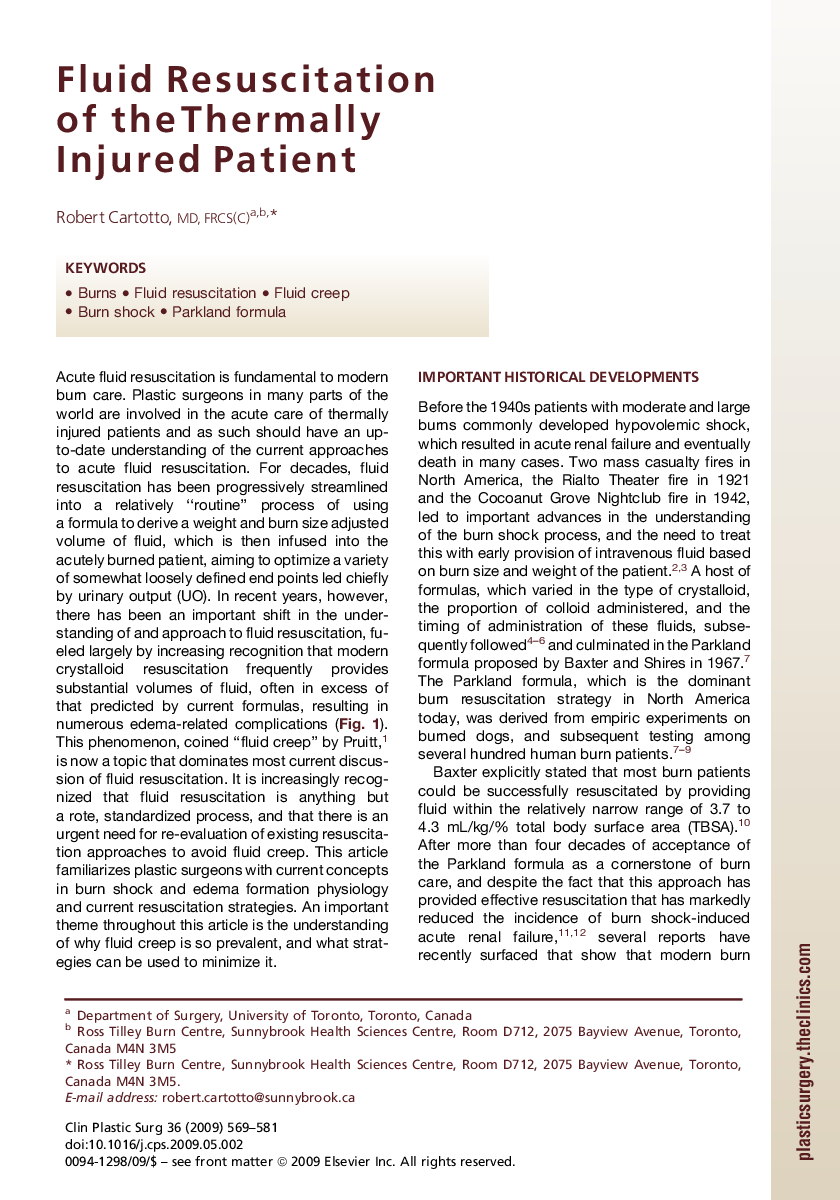| Article ID | Journal | Published Year | Pages | File Type |
|---|---|---|---|---|
| 4108383 | Clinics in Plastic Surgery | 2009 | 13 Pages |
Increased capillary permeability and reduced plasma colloid osmotic pressure following burn injury result in hypovolemia and development of edema in the burn and nonburn tissues. Replenishment of the intravascular deficit with crystalloid fluid has been the mainstay of resuscitation for the better part of four decades. A progressive but as yet unexplained trend toward provision of resuscitation volumes well in excess of those predicted by the Parkland formula, associated with numerous edema-related complications, has been repeatedly observed recently. Correction of this phenomenon, called fluid creep, will likely revolve around several strategies, which may include tighter control of titration, re-emergence of colloids and hypertonic salt solutions, and possibly the use of adjunctive markers of resuscitation other than urinary output.
